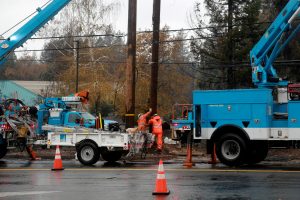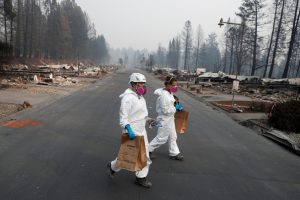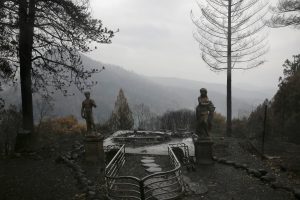
By Lucia Mutikani
WASHINGTON (Reuters) – The number of Americans filing applications for unemployment benefits dropped from near a 1-1/2-year high last week, but the decline was less than expected, suggesting some moderation in the pace of job growth.
Still, the Labor Department’s report on Thursday continued to point to strong job market conditions, which should underpin the economy amid rising headwinds, including a fading fiscal stimulus boost and a trade war between Washington and Beijing, as well as slowing growth in China and Europe.
The Federal Reserve last week kept interest rates steady but said it would be patient in lifting borrowing costs further this year in a nod to growing uncertainty over the economy’s outlook. The U.S. central bank removed language from its December policy statement that risks to the outlook were “roughly balanced.”
“Labor market conditions remain quite positive, good news for workers, for the consumer sector and the economy more broadly,” said Jim Baird, chief investment officer at Plante Moran Financial Advisors in Kalamazoo, Michigan.
Initial claims for state unemployment benefits tumbled 19,000 to a seasonally adjusted 234,000 for the week ended Feb. 2, the Labor Department said on Thursday. The drop partially unwound the prior week’s jump, which lifted claims to 253,000, the highest reading since September 2017.
Claims that week were boosted by layoffs in the service industry in California, most likely striking teachers in Los Angeles.
A 35-day partial shutdown of the federal government as well as difficulties adjusting the data around moving holidays like Martin Luther King Jr. day, which occurred later this year than in recent years, also probably contributed to the spike in filings.
The longest shutdown in history likely forced workers employed by government contractors to file claims for unemployment benefits.
The shutdown ended on Jan. 25 after President Donald Trump and Congress agreed to temporary government funding, without money for his U.S.-Mexico border wall.
Economists polled by Reuters had forecast claims falling to 221,000 in the latest week.
U.S. stocks were trading lower on renewed fears of a global slowdown after the European Union cut its economic growth forecasts and White House adviser Larry Kudlow warned there was still a sizable distance to go on U.S.-China trade talks. The dollar was little changed against a basket of currencies, while U.S. Treasury prices rose.
MOMENTUM SLOWING
The Labor Department said no states were estimated last week. The four-week moving average of initial claims, considered a better measure of labor market trends as it irons out week-to-week volatility, rose 4,500 to 224,750 last week. Claims by federal government workers, which are filed separately and with a one-week lag fell 8,070 to 6,669 in the week ended Jan. 26.
“Claims remain important to watch in the weeks ahead,” said Jim O’Sullivan, chief U.S. economist at High Frequency Economics in White Plains, New York. “The data are suggesting at least some slowing in employment growth.”
The government reported last Friday that non-farm payrolls increased by 304,000 jobs in January, the largest gain since February 2018. Thursday’s claims report showed the number of people receiving benefits after an initial week of aid fell 42,000 to 1.74 million for the week ended Jan. 26.
These so-called continuing claims had raced to a nine-month high in the prior week. The four-week moving average of continuing claims rose 4,250 to 1.74 million.
(Reporting By Lucia Mutikani; Editing by Andrea Ricci)











